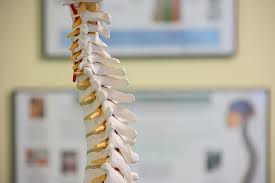New consensus guidelines do not recommend steroids for acute spinal cord injury, citing studies that they do more harm than good (including higher rates of infections, complications, ICU LOS, and death) (abstract).
Share This Post
Categories
Related Posts
In this large multicenter trial, patients with minor stroke or TIA were randomized to clopidogrel+ASA or ASA alone; 90-day stroke occurred in 8% vs 12% respectively, and rates of hemorrhage or hemorrhagic stroke were the same (abstract).
These guidelines provide an evidence based for the use of periprocedural antithrombotics in patients with cerebrovascular disease. They recommend continuing ASA-warfarin for dental procedures, and most other minor procedures. There is little evidence to support the use of procedural bridging with heparin, and it does increase the risk of bleeding. Cessation of therapy for 7 […]
A large analysis from a stroke registry found better outcomes with earlier thrombolytics for acute ischemic stroke; every 15 minutes earlier was associated with an odds ratio of 0.96 for in-hospital death or intracranial hemorrhage, and an odds ratio of 1.03 for being discharged home and 1.04 for walking independently at discharge (abstract).



Leave A Comment